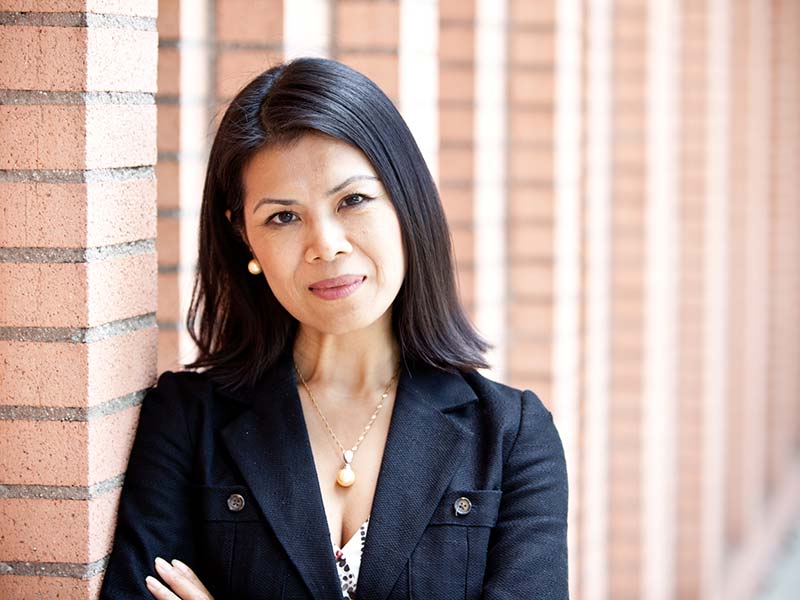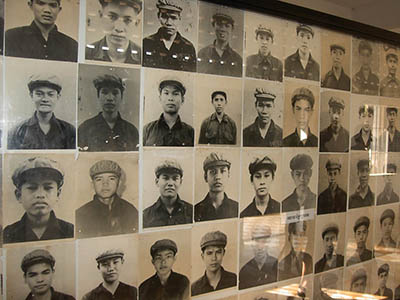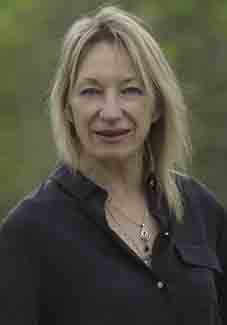In 1975, a communist regime known as the Khmer Rouge conquered the Cambodian capital of Phnom Penh. The occupation set in motion a four-year campaign of genocide that would wipe out 2 million people – a quarter of the country’s population. Developed through a partnership between USC Shoah Foundation and the Documentation Center of Cambodia, the Cambodian Genocide Collection offers testimonies of survivors who escaped the killings from 1975 to 1979.
About the Collection
In January 2017, the USC Shoah Foundation added to the VHA 5 testimonies of survivors of the Cambodian Genocide. The Khmer Rouge held power in Cambodia for just under 45 months (April 1975-January 1979) and left 1.6–3 million Cambodian civilians dead through starvation, torture, execution, medical experiments, untreated diseases, forced marches, forced labor, and other forms of violence. However, even after 1979, the Khmer Rouge remained active in remote regions of the country; thus, fatalities may be higher than documented. The five testimonies were recorded by the USC Shoah Foundation in the United States in 2009, 2011, and 2015. Three are in English and two in Khmer (with English subtitles). All five interviewees witnessed first-hand the Khmer Rouge’s evacuation of the capital city Phnom Penh in April 1975, the forced marches that followed, and forced labor in horrific conditions in the northwest of the country.
Brief Historical Background
The Khmer Rouge ruled a totalitarian state in which citizens had essentially no rights – they abolished civil and political rights, private property, money, religious practices, minority languages, and foreign clothing. Citizens could be detained for the slightest offenses, and the government set up vast prisons where people were held, tortured, and executed. The most infamous of these prisons was known as “S-21,” located in the capital city of Phnom Penh, where accused “traitors” and their families were brought, photographed, tortured, and killed. Of the roughly 17,000 men, women, and children who were brought to S-21 there were only about a dozen survivors. There were mass graves throughout the country, areas that became known as “killing fields.”
The Khmer Rouge based their policies on the idea that citizens of Cambodia had become corrupted by outside influences, especially Vietnam and the capitalist West. The Khmer Rouge referred to people who supported their vision as “pure people,” and persecuted anyone they deemed “impure.” Within days of taking power, the regime killed thousands of military personnel and forcibly moved millions of people out of cities, killing anyone who refused or was too slow. They forced citizens into what they called reeducation schools, which were essentially places of state propaganda. The regime forced families to live communally with other people, in order to destroy the family structure. The Khmer Rouge targeted ethnic minorities, especially Chinese, Vietnamese, and Muslim Cham, of whom an estimated 80% were killed. In addition, anyone who was believed to be an intellectual was killed: doctors, lawyers, teachers, even people who wore glasses or knew a foreign language became targets. Specially targeted were the inhabitants of the areas close to the Vietnamese border.
On December 25, 1978 Vietnam invaded Cambodia. The Vietnamese sought to remove the Khmer Rouge from power. At first, survivors of the Khmer Rouge regime considered the Vietnamese to be liberators, but they were soon viewed as occupiers.
Aftermath
Vietnamese troops stayed in the country until 1989, with armed clashes between Vietnamese and Cambodians going on throughout the 1980s. A post-Pol Pot government with some democratic features, led by a reestablished monarchy, took over. Yet the Khmer Rouge did not disappear until much later, and continued to hold Cambodia's seat at the United Nations for twelve years. On October 23, 1991 the Comprehensive Cambodian Peace Agreement (commonly referred to as the “Paris Peace Accords”) was brokered by the United Nations, ending the twelve year civil war in Cambodia. Cambodia was temporarily governed by the National Council and the United Nations Transit Authority of Cambodia. In May 1993 the first free elections in more than twenty years were held. In January 2001 the Cambodian government established the Khmer Rouge Tribunal to try leadership of the Khmer Rouge for crimes against humanity. Trials began in 2009 but have led to only three convictions, including that of Kaing Guek Eav, the commander of the S21 prison, who was sentenced to life in prison for crimes against humanity. The vast majority of the perpetrators suffered no consequences for their actions.



